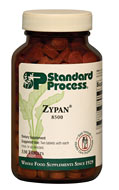Peptic Ulcers

|
first of all, in health.” George William Curtis |
About 20 million Americans develop at least one ulcer during their lifetime. About one out of every 10 Americans will suffer from the burning, bothering abdominal pain of a peptic (or gastric) ulcer at some point in life. Ulcers can develop at any age, but they are rare among teenagers and even more uncommon in children. Duodenal ulcers occur for the first time usually between the ages of 30 and 50. Stomach ulcers are more likely to develop in people over age 60. Duodenal ulcers occur more frequently in men than women; stomach ulcers develop more often in women than men.
During normal digestion, food moves from the mouth down the esophagus into the stomach. The stomach produces hydrochloric acid and an enzyme called pepsin to digest the food. From the stomach, food passes into the upper part of the small intestine, called the duodenum, where digestion and nutrient absorption continue.
An ulcer is a sore or lesion that forms in the lining of the stomach, esophagus or duodenum where acid and pepsin are present. Peptic ulcers develop on the inside lining of your esophagus, stomach and the upper portion of your small intestine. The most common symptom of a peptic ulcer is abdominal pain. Peptic ulcers that occur on the inside of the stomach are called gastric ulcers. Peptic ulcers that occur inside the hollow tube (esophagus) where food travels from your throat to your stomach are called esophageal ulcers. Peptic ulcers that affect the inside of the upper portion of your small intestine (duodenum) are called duodenal ulcers.
- What really causes the ulcer
- What are surprising symptoms
- What test you need to do to determine if you need acid therapy
- What therapy you need to do once your ulcer is cleared up in order not to return over
- 8 steps that naturally prevent and improve your peptic ulcers











